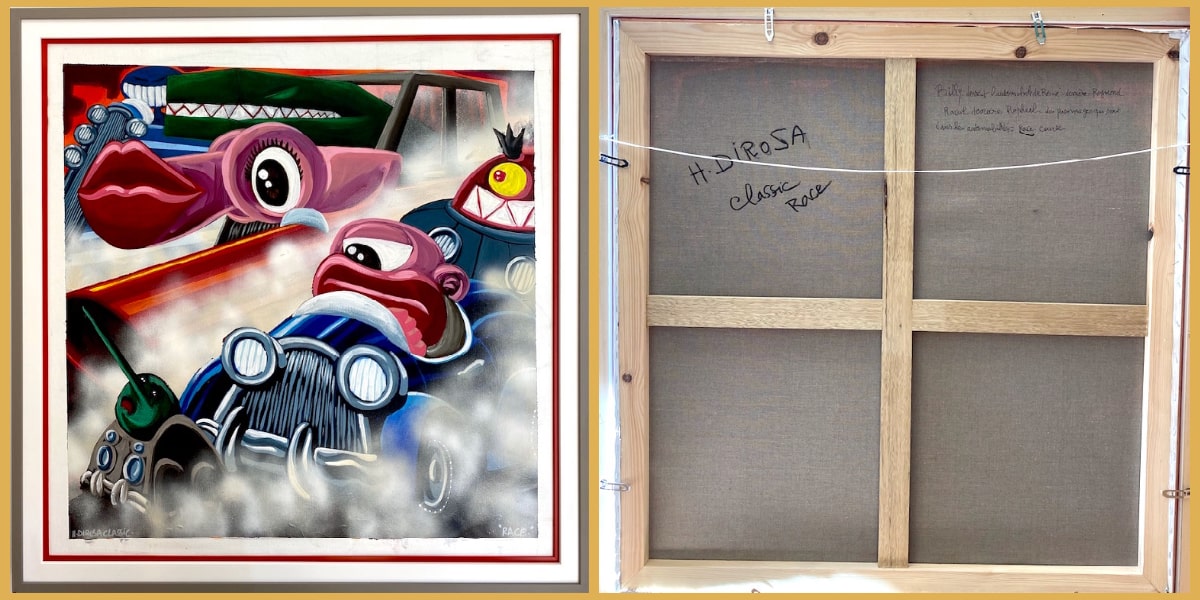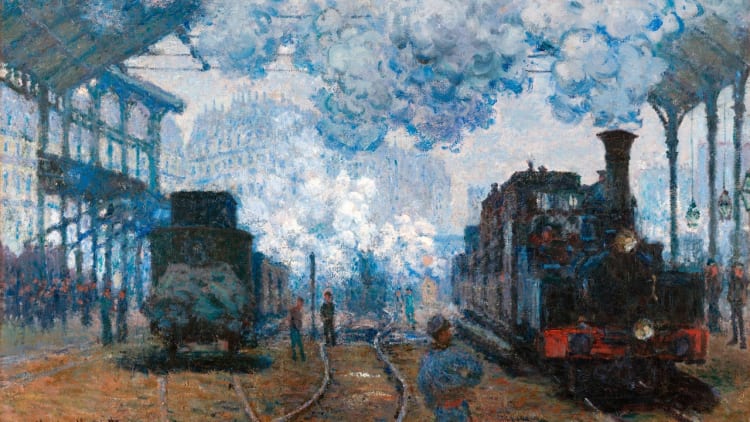The back of a painting can be surprising and significantly change the value of the work. Thibault de Watrigant, art expert, explains the different elements that can be hidden on the back of a painting.

The main information
Historically, artists began to sign their creations during the 15th century, most often on the front.
Many contemporary artists do not hesitate to sign on the back, to title it, to date it and even to add elements providing a better understanding and personalization of the painting.

This is for example the case for Classic Race, an acrylic on canvas painted by Hervé Di Rosa in 2018. In addition to the title and his signature, the artist gives explanations on the back to better understand his work.
When we analyse a painting, we first look to see who the author is, so looking at the back should be a reflex if the front does not enlighten us enough.
The signature is an important element in attributing authorship to a painting. An artist's signature can even tell us about the dating of the painting. Indeed, some artists have had different signatures during their career.
The age of the work
The materials used give valuable information on the dating of the work and even on its authenticity. On the back of the painting, for example, we can find the name of the canvas's maker and his address, which is very valuable for dating the painting and confirming a hypothesis.
Even more simply, when the painting is not dated on the back or the front, the color of the canvas can tell us how old it is. It should be noted that most paintings are painted on white or off-white canvases, as time always has a yellowing effect on these supports.
Labels
These small squares or rectangles of paper stuck to the back of the painting are not to be ignored, they are affixed in different contexts, here are the main ones:
- At a public sale: an auction house or art gallery generally affixes a label with the artist's name, the title of the painting, the date, an inventory number / lot number and sometimes an address.
- At an exhibition: museums and cultural institutions usually affix a label on the back of each painting to identify and reference them.
- Within an art collection: a collector may decide to add a label symbolizing his own art collection.

A trois crayons by Paul-César Helleu and its labels
Labels are important to consider when looking at the back of a painting. Moreover, their presence can also constitute an additional element of valorization, as is the case for the drawing reproduced above.
Restorations
In addition, the back of the painting can show if it has been restored.
For example, if the back of the canvas shows traces of glue around the edges or if the canvas is thick and new, it is likely that the painting has been lined. This technique, also known as "lining", is a method of attaching an extra layer of canvas to the original surface to repair holes or tears, thus preserving the painting and improving its condition.
This lining of the canvas was almost systematic among the old masters, and was done by hand, which could cause some collateral damage to the painting.
To see if a painting has been restored, we can also look at the back to see if there is a discolored area or one that has a different texture from the rest.
In general, extensive restoration or lining can have a negative impact on the value of a painting.
The state of conservation
Traces of humidity or deformation of the support are easily visible from the back of a painting. To judge the state of conservation of a painting, it is therefore necessary to look at the work in its entirety and not hesitate to focus on its back.
For example, if the stretcher is deformed or if the paint layer is cracked, this may mean that the work has been hung in a humid or too dry place.
Another artwork
One painting can hide another! It is quite possible to turn over a painting and come face to face with another work. This phenomenon is even more common with drawings.
This can be explained by the fact that, in the past, materials were relatively expensive, so less fortunate artists might have had to try out several compositions on the same support.




